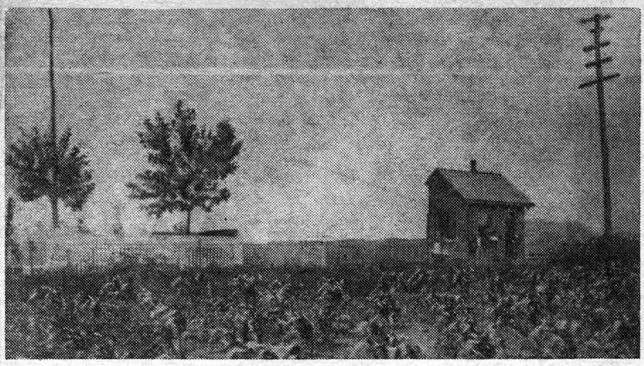
Two weeks ago, in “Your Town and My Town” we quoted from a quaint little book, published in 1855, concerning the early days of the Pennsylvania Railroad. We had taken our readers from the old depot, located on the Delaware River at the foot of Market street, past Hestonville, Libertyville and Athensville, to White Hall, ten miles from the city.
Mr. Herbert S. Casey, who lent this writer this old “Guide for the Pennsylvania Railroad,” explains that Hestonville was a little village near what is now 52d street, in Philadelphia. His grandfather, Francis Cope Yarnall, was much interested in the well-known little Episcopalian Church in this section.
Libertyville is our present suburb of Narberth, while Athensville later became Ardmore. Athens avenue still commemorates the old name. White Hall, later became Bryn Mawr, although the location of the railroad station was considerably changed from its original site near the present Bryn Mawr College.
The description of the old route of the Main Line trains continues, “We may observe to the left a large building with an extensive lawn, and a handsome wood between it and the railroad. This is the Haverford College, belonging to an association of Friends, where a classical education may be obtained… we next pass on to the station of Villa Nova (a Roman Catholic College), Morgan’s Corner and the Eagle, and arrive at the Paoli, 20 miles on our journey. The train frequently stops here for refreshments. Near this place 150 Americans, under General Wayne, were killed and wounded on the night of the 20th of December, 1777, by a detachment of English under General Gray. This action is frequently called the Paoli ‘Massacre’.”
In order to clarify this description, written more than 100 years ago, the present writer adds the following facts: First of all, Villanova retains its original name, while Morgan’s Corner has now become Radnor. In regard to the name of “The Eagle,” now Strafford, the writer obtained much authentic information from the late Mrs. Charles Carroll Suffren, one of the oldest residents of the section, who died this month just before her 99th birthday.
In reference to old taverns along the Main Line, Mrs. Suffren wrote that “the Eagle was known as ‘The Spread Eagle’ and the post office at Eagle Station, midway between Strafford and Devon was also so called, taking its name from the old tavern.”
Wayne is not on the 1855 map. It may have been a little later that trains began to stop to take on milk at the Cleaver Farm, later known as the William Wood property and now a nursing home located on East Lancaster avenue. The milk stop was called “Cleaver’s Gate” or “Cleaver’s Landing.” Later this became Louella and then Wayne.
The first station was a large, square wooden pillar laid on its side, where passengers sat while they waited to flag the train. An old wagon bed, which took the place of this pillar, was burned one Fourth of July. Then a small box-like station was built with a house attached, in which the ticket agent lived. J. Henry Askin, one of Wayne’s pioneers, of whom much has been written in this column, is said to have had a private waiting room in this station for his family. Until a short time ago, this old frame station, which had been enlarged from time to time, stood to the rear of the Wayne Hotel, now the church house of the Wayne Presbyterian Church.
(To be continued)
